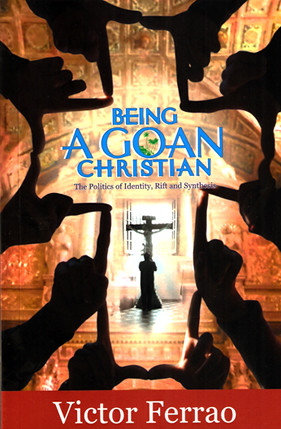Regular viewers of prime time national
news would remember the recent incident where India’s tennis star Sania Mirza
broke down on live television, following some legislators from Telangana questioning
her right to be the brand ambassador of the newly formed state of Telangana. In an exclusive interview given to NDTV’s Barkha Dutt, Mirza said that it was “Extremely
hurtful” that she has to “keep justifying our Indianness, keep asserting our
Indianness again and again, and time and again…I don’t know why…” On her part,
Dutt tried to brush aside the controversy claiming it to be “unnecessary”, “petty”,
“absurd”, and “an aberration”.
However, to her credit, Dutt did broach
Mirza’s Muslim identity as perhaps causing the said controversy. But Mirza
still maintained that she did not know why. This column is in agreement with
Dutt and Mirza that the nature of the comments made were indeed sexist and
patriarchal. However, if we also factor in the ‘patriotism’ that both Dutt and
Mirza defended – indeed asserted – as a way out of the unholy mess that was
created, reality appears to be much more complex. That the identity of a ‘woman’
and an ‘Indian’ took precedence over Mirza’s Muslim identity allows us to analyze
minority identity politics afresh.
Mirza’s interview allows us to approach
the problem of a ‘double bind’ that minorities have to face in India. This
‘double bind’ holds the loyalty of the Indian Muslim as suspect (being
anti-national) on the one hand; while on the other, the Indian Muslim is simultaneously
called upon to actively participate in the workings of the secular
nation-state, by asserting themselves as Muslims. But the problem gets further
complicated as such participation can only happen by consciously sidetracking
one’s Muslim identity. So in other words, one is damned if one does participate
and damned if one doesn’t. The historian Ayesha Jalal, in her essay ‘Exploding Communalism: The Politics of Muslim Identity in South Asia’, puts the matter in
a longer historical context when she says, “The original sin of being
communalist for the most part have been reserved for the [Indian]
subcontinent’s Muslims”. Further, Jalal also echoes the argument that has been
made by other scholars as well when she says, “The tolerant secularist and the
bigoted Hindu are really after the same pound of flesh – Muslims have to stop
drawing upon the religious and cultural strands of their identity if they want
complete integration in the secular and democratic framework of the Indian
nation-state”.
The abovementioned interview provides
another perspective for those of us who are worried about the growing communalization
in Goa to understand the problem. We should recognize that the predicament that
the Muslims find themselves in is not very different from that which the Catholics
in Goa experience. On the one hand the Catholic cultural practices informed and
inflected by the Portuguese presence were and are used to define Goa to a
larger Indian imagination (via the manner in which tourism is marketed, for
instance), and on the other hand any political demands that are perceived to
come from a Catholic location (though the reality may suggest otherwise)
exposes Catholics in Goa to charges of being communal and anti-national. In
other words, the loyalty of the Goan Catholic to Goa (as well as India) is held
suspect, a point that Fr. Victor Ferrao makes in his Being a Goan Christian.
Recognizing the similar ways in which
Muslims and Catholics have to negotiate a tricky dance with the working of the
nation-state one can see how particular lines can or cannot be crossed by
certain persons. Thus in September 2013 when the Chief Minister Manohar
Parrikar had erroneously asserted that a Goan Catholic is culturally Hindu, it
had resulted in a national controversy. Cut to 2014, when the Deputy Chief
Minister, Francis D’Souza asserted that he is a “Christian-Hindu”, it also
resulted in a controversy at the national level. But here is a twist that I
would like to draw attention to: bowing to intense pressure and criticism,
D’Souza retracted his statement and apologized for it, maintaining that it was
his personal opinion and he was not wrong to make such a statement. Parrikar,
on the other hand, did not withdraw his statement and neither did he apologize
for it. It must be noted that D’Souza’s statement, in essence, is no different
from Parrikar’s. The asymmetry that exists in the two incidents is clearly
visible. An asymmetry that exists, I suspect, due to this selfsame ‘double
bind’ of minority identity in India.
The controversy that D’Souza raked up
was followed by predictable assertions of ‘Goanness’ and ‘Indianness’ on social
media. Indeed some even went to the extent of suggesting that if we consider
ourselves ‘humans’ first and foremost, it would be enough. Well, clearly it is
not enough. Making such overarching, ‘national’ assertions only obscures the
complexity of identity politics. In the case of Goa, the observable fact is
that one cannot participate in Goan political, public, and cultural life by
simply being Catholic; one has to also give in to certain notions of ‘Hinduness’.
Linking the predicament of Muslims in
India to that of the Catholics in Goa may seem like a long shot to some. However,
I would like to suggest that by juxtaposing the problems of the Muslims and
Catholics with each other, one can broaden one’s understanding of how minority
identity and the concomitant politics works in India. Though the comments
referred to above were made in seemingly different contexts, yet recognizing
the similarity of the politics and power structures that drive the visions
behind them, can allow us to think about ourselves in new ways. The drive
towards asserting one identity, but
remaining willfully blind to other identities – even suppressing them – will only
allow inequalities to thrive.
Thanks
to Shahrukh Alam and Rubina Jasani.
(First published in O Heraldo, dt: 6 August, 2014)


No comments:
Post a Comment